Count Albert Apponyi of Nagyappony, born 175 years ago on 29 May 1846, of aristocratic origin, became the Minister of Religion and Education. He became an important figure in Hungarian history as the creator of the elementary school laws named after him (Lex Apponyi) and the chairman of the delegation of defeated Hungary after World War I. On the occasion of the Peace Conference on 16 January 1920, he delivered a famous defence speech at the Paris Foreign Ministry to the prime ministers of the Entente, in which he protested on behalf of the Hungarian nation against the strictness of the terms of the peace treaty. According to this, the area of the Kingdom of Hungary would have decreased from 282 thousand square kilometres to 93 thousand square kilometres and its population would have decreased from more than 18 million to 7.6 million (figures calculated without Croatia).
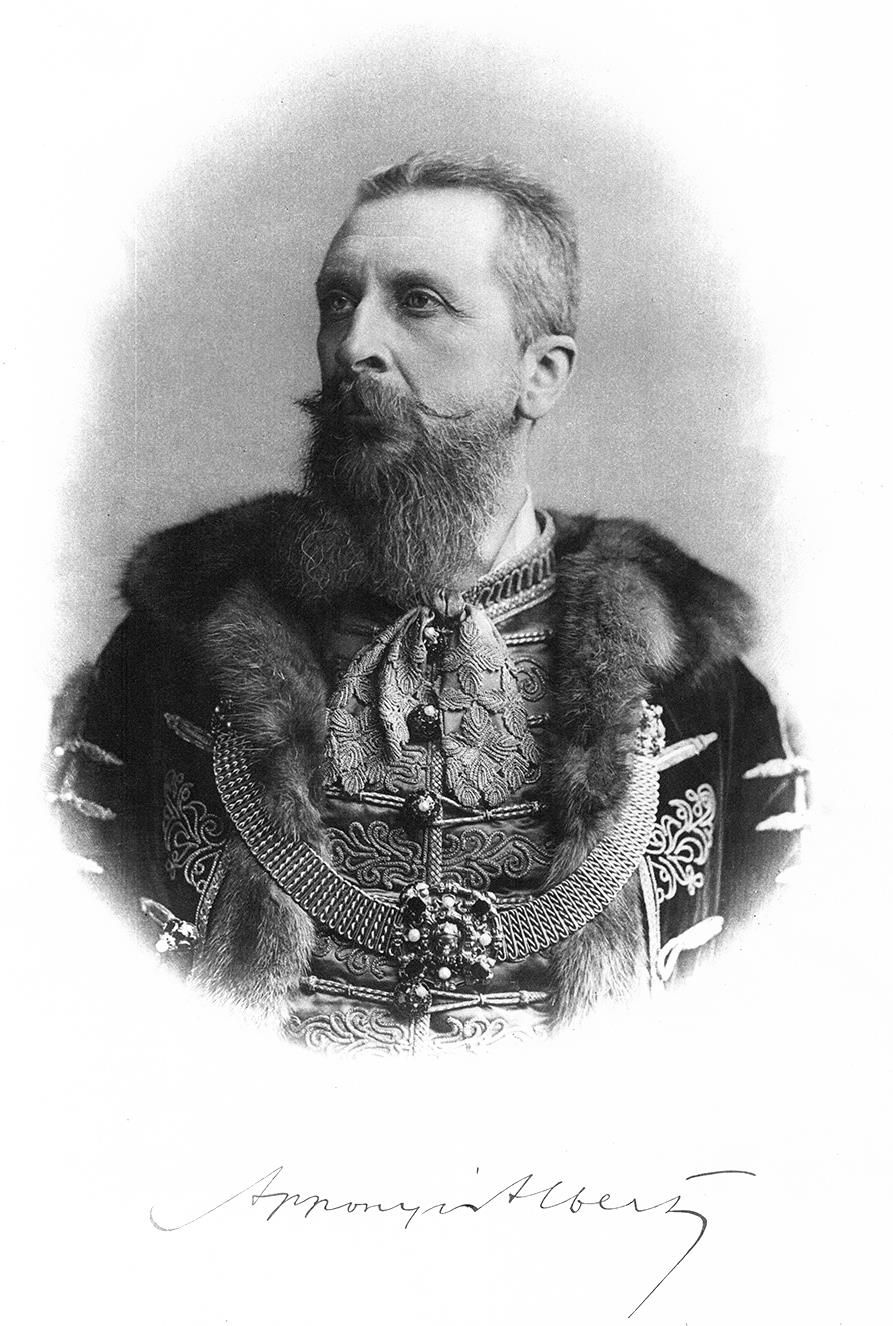
Albert Apponyi was named the nation's defence lawyer in his lifetime (Source: Wikipedia)
The speech became significant during the revisionist movement launched against the Trianon peace treaty. A personal cult developed around Apponyi in the spirit of revisionism, after the defence speech he was called the “lawyer of the nation.” On his seventy-fifth and eightieth, eighty-fifth birthday, he took part in glamorous celebrations. He received a memorial book, public spaces were named after him in the capital and rural cities while he was still alive (Naming public spaces after living people is extremely rare in Hungarian tradition – the ed.).
A magnificent funeral was held in his honour, and on the anniversaries of his death, he was remembered with memorial speeches. Sculptures and paintings were made of him, and a separate memorial room was set up in the old Museum of the National Assembly for his relics. He was apostrophised as “the great old man of Europe” by his positively biased followers. His memory and cult came to an end during the communist dictatorship that took power violently in the years after 1945, but his cult did not rise after the change of regime in 1989–1990 and did not become part of the national public memory.
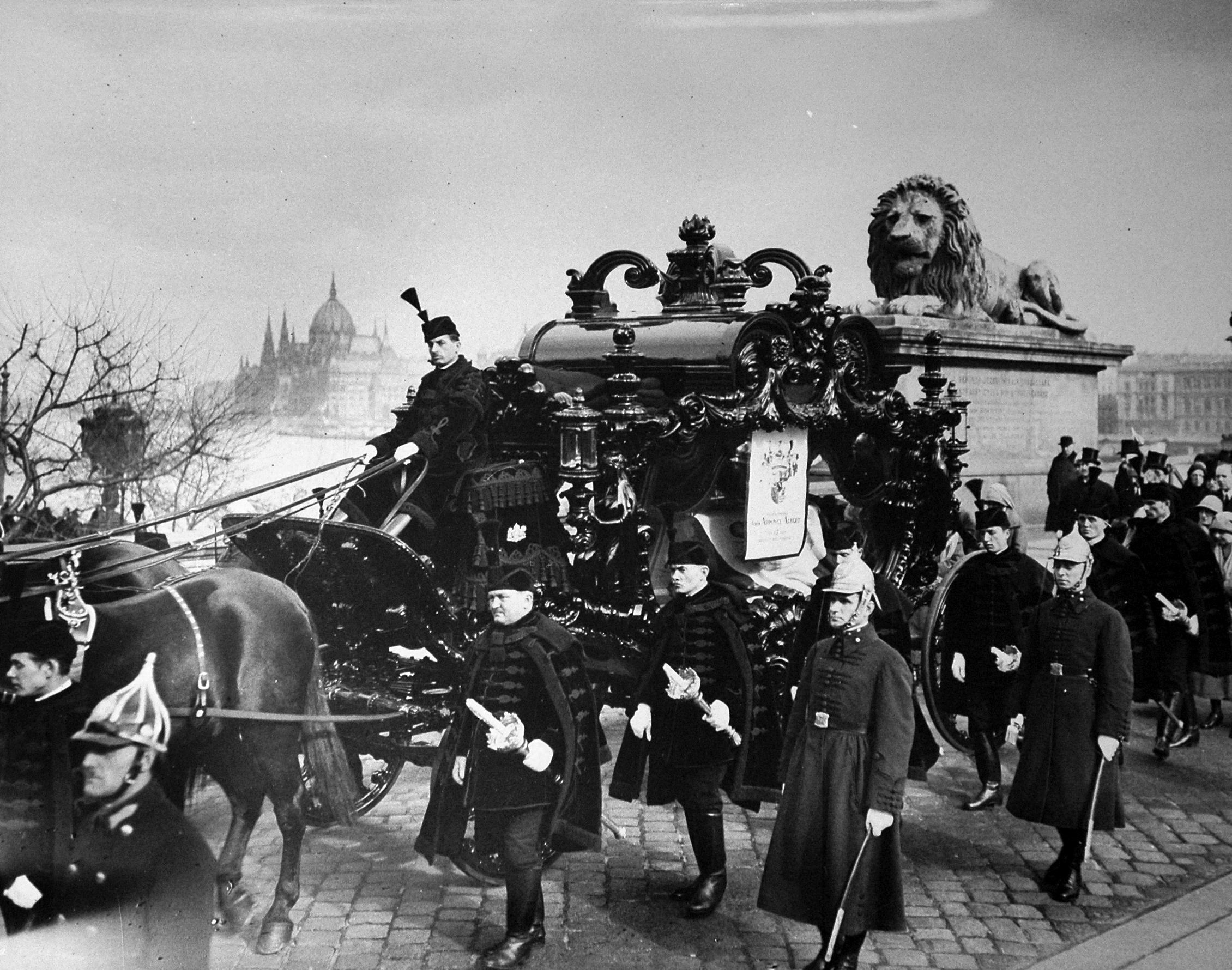
He was buried like a king. The Apponyi Carriage arrives in Buda after crossing Chain Bridge (Source: Tolnai Világlapja, 22 February 1933)
As a result of the cult around Apponyi, he was part of a national celebration on the occasion of his seventy-fifth birthday on 29 May 1920. Hundreds of rural towns and villages awarded Apponyi the title of Honorary Citizen in a ceremonial meeting in May. He was elected an honorary member and honorary president of associations. Poems were written in his honour. Several settlements named public spaces after him.
People celebrated him for several days in the capital at the end of May, and Apponyi personally participated in this series of events.
An organising committee was formed in the spring of 1921 ("Apponyi Celebration Organising Committee") to organise and coordinate the events, in which the President of the Hungarian Academy of Sciences, retired secretaries of state, the former Chief of Police of the capital, the Chief Lieutenant of Pest County, a Member of Parliament, and three World War I generals also took part. An invitation was made in the newspapers on 1 May which read "we call on the living generation to celebrate one of the greatest men of our time and our nation."
.jpg)
Count Albert Apponyi on the cover of the 25 May 1921 issue of the Vasárnapi Ujság
Given that Apponyi was a Member of the National Assembly, the series of events began at Parliament on Friday, 27 May. A solemn meeting was held here, where speaker István Rakovszky gave a commendable speech, to which Apponyi responded, after which the present Members unanimously voted on the proposal of the President to record Apponyi's merits in the minutes. The special session lasted just over half an hour, according to the National Assembly's records.
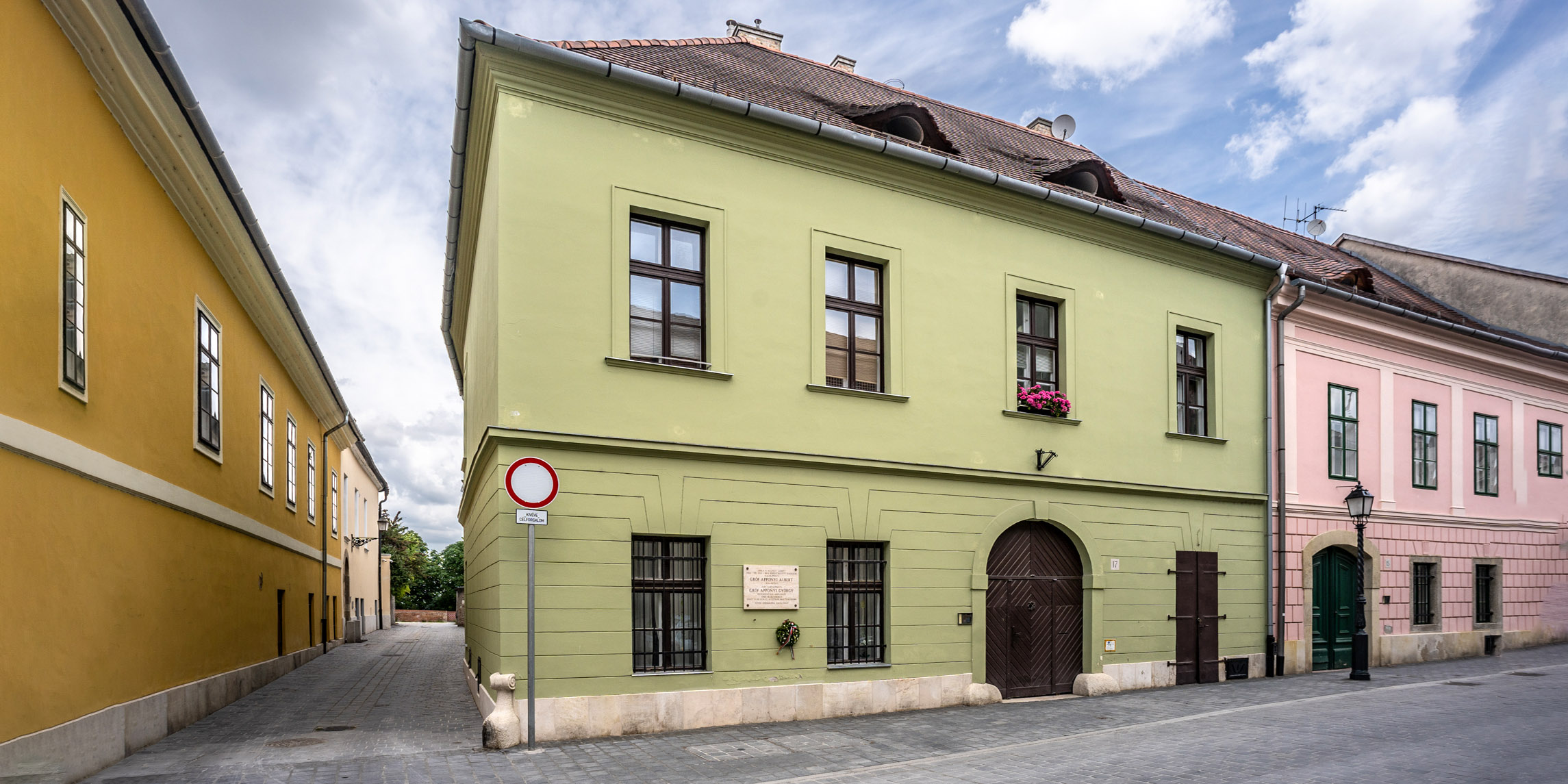 Apponyi's former home, today's 17 Táncsics Street in Buda Castle (Photo: Balázs Both/pestbuda.hu)
Apponyi's former home, today's 17 Táncsics Street in Buda Castle (Photo: Balázs Both/pestbuda.hu)
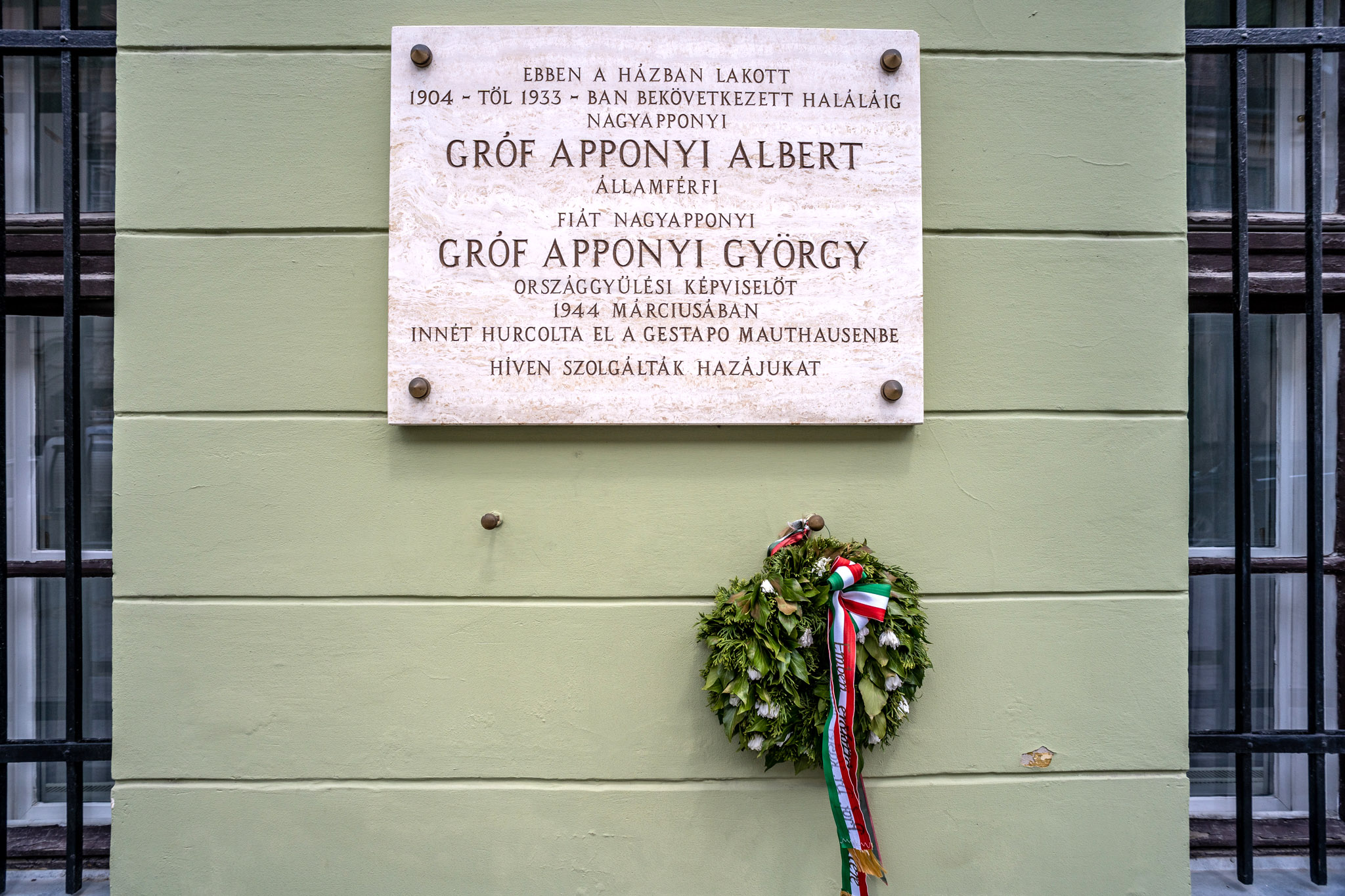
Memorial plaque on the wall of the house at 17 Táncsics Street (Photo: Balázs Both/pestbuda.hu)
On Saturday morning, Governor Miklós Horthy visited Apponyi at his home in Buda Castle, at 17 Táncsics Mihály Street, and took him to St. Stephen's Basilica by car.
The Budapesti Hírlap portrayed the festive atmosphere to its readers:
“Budapest is dressed for festivities today and the whole country is celebrating, we are honouring our seventy-five-year-old Albert Apponyi. (…) The city celebrates and dresses in national flags, expensive Persian rugs hang from the windows of houses, festive splendour and celebratory mood follow us everywhere.”
.jpg)
The military saluted the Count in front of the Basilica (Photo: Vasárnapi Ujság, 12 June 1921)
The citizens of the capital filled the streets along the count's route, and the buildings were covered with flags. The military saluted the Count in front of the Basilica and inside, Archbishop János Csernoch celebrated mass, and then Bishop Ottokár Prohászka of Székesfehérvár gave a welcome speech in honour of Apponyi.
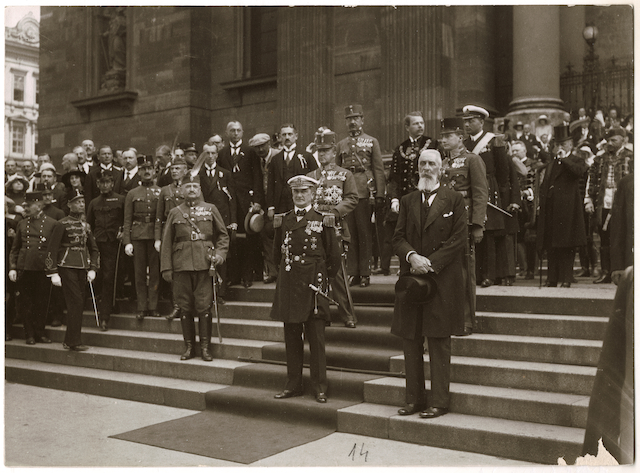
With Governor Miklós Horthy in front of the Basilica (Photo: FSZEK Budapest Collection)
After the ecclesiastic ceremony, the mayor of Budapest took the count to the Vigadó building in the capital's ornamental carriage decorated with flowers to continue celebrations. Prime Minister Count István Bethlen greeted Apponyi on behalf of the Cabinet, Baron General Rezső Willerding greeted him on behalf of the Royal Hungarian Army, and then representatives of various associations and social organisations spoke to the celebrants.
.jpg)
The Count was taken to the Vigadó on the decorated carriage of the capital (Photo: Vasárnapi Ujság, 12 June 1921)
Apponyi was allowed to rest in the afternoon but had to go to Sándor Palace, the prime minister’s residence, at ten o’clock in the evening, where the prime minister gave a tea party in his honour. The governor, ministers, foreign diplomats, generals, aristocrats, and members of the Habsburg-Lorraine dynasty living in Hungary attended.
Seventy-five-year-old Apponyi was greatly mistaken when he thought he could rest when he got home from the prime minister. In front of his home, Werbőczy Street near Buda Castle (today 17 Táncsics Street), half a thousand people, members of various song associations, organised a torched serenade coordinated by the Hungarian Song Association.
.jpg)
The national Apponyi-celebration presented on the cover of the 29 May 1921 issue of the Nemzeti Ujság
.jpg)
Caricature in the 29 May 1921 issue of Borsszem Jankó
The celebration continued on Sunday, 29 May, the actual birthday. First, a festive event took place at the Pest County Hall, where the delegates of the rural municipalities handed over the diplomas of honorary citizenship to Apponyi.
The gala performance was held at the Opera House in the evening, where, in addition to the celebration, Governor Miklós Horthy and his wife and Archduke Joseph August, the doyen of the Hungarian branch of the Habsburg-Lorraine family, appeared. The National Theatre, the Comedy Theatre and other theatre companies also created festive performances for the evening, but Apponyi was unable to watch their programs as he sat in the ornate box in the company of the Head of State.
Budapest, as a local government, was also prepared to celebrate Apponyi. The Public Works Council named the then Kígyó Square in the 4th District (today Ferenciek Square in the 5th District) Apponyi Square. The members of the council expressed their decision in the Official Reports of the Public Works Council:
“We named Kígyó Square after Count Albert Apponyi, one of our greatest living statesmen, on the occasion of the 75th anniversary of his birth and the 50th anniversary of his public career, to Apponyi Square. Naming the square after someone still alive is exceptional, as Apponyi represents exceptional value in the country.”
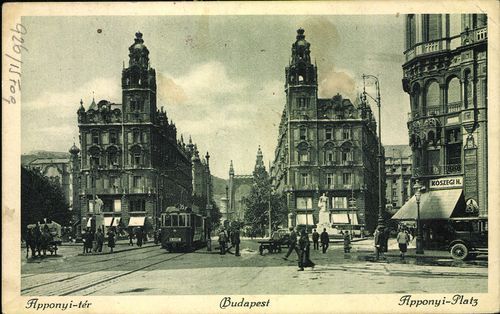
The former Kígyó Square (today's Ferenciek Square) was named Apponyi Square on the occasion of his 75th birthday (Source: contemporary postcard)
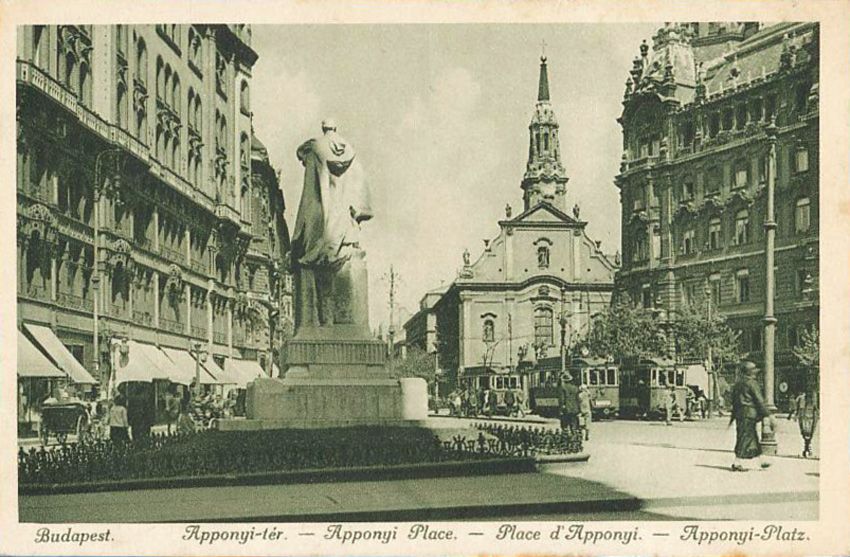
Apponyi Square (Source: contemporary postcard)
At the ordinary general meeting of the legislative committee of the capital, held on 16 March 1921, he had been promoted to the ranks of its honorary citizens.
According to the report of the Fővárosi Közlöny, János Szigeti, a member of the legislative committee, submitted a proposal from the faction of the Christian Community Party (Keresztény Községi Párt) to donate the title of an honorary citizen to Apponyi. Szigeti, when his proposal was on the agenda, made a speech to praise Apponyi.
“We are fully aware that this motion does not require further explanation; nevertheless, we draw the attention of the esteemed General Assembly to the fact that this providential statesman of Hungary will celebrate the 75th anniversary of his noble life in May of this year, and next year will be half a century of entering the field of public life. The capital of Hungary would therefore be in an unforgivable delay if its citizens did not provide him with the most beautiful wreath of civic recognition in time. (…) It is impossible to pass without the deepest start and gratitude to the fact that, at a time when Mutilated-Hungary was in its most desperate situation, it was the statesman of the patriarchal age who poured hope and confidence into the discouraged nation; who, struggling with indifference, bias, and hatred, defended the inalienable rights of the homeland before the Areopagus of the victors. (...) The whole nation was anxious to look upon every word of his fiery apostle before the European public, for they felt that he was the most faithful and worthy advocate of their desires and aspirations, of the truths and their rights. Albert Apponyi has always proudly declared himself a citizen of Budapest; let Budapest be proud to profess Albert Apponyi its honorary citizen.”
After the representative's speech, accompanied by a long round of applause and cheers, Albert Apponyi was unanimously elected an honorary citizen of Budapest.
The Count had a very wide range of charitable social activities during his life. The background of this activity was his Catholic philanthropy and love of humanity. The result of his fundraising work with other aristocrats can be measured in building complexes in the inner districts of the capital.
He enthusiastically supported the Budapest General Polyclinic Association for decades from its founding in 1887, first as vice-president and then from 1901 as president, which set out to provide outpatient and inpatient care for the poor in the capital. The association was already able to operate a hospital by the turn of the century. The hospital of the association (today the building stands in Szövetség Street, 7th District) was named Count Albert Apponyi Polyclinic on the occasion of his seventy-fifth birthday.
.jpg)
The Count Albert Apponyi Polyclinic in the 1930s (Photo: FSZEK Budapest Collection)
During World War I, in 1915, under the presidency of Apponyi, the National Stefánia Association was formed in the name of maternal and infant protection. They wanted to eradicate infant and child mortality through the nationwide establishment of a midwifery and maternity nurse system, and the training of mothers in hygiene and health within the framework of courses. The foundations of a modern network of visiting nurses was laid. As a result, the Association’s maternity shelter in the capital opened its doors. It was named after the president of the organisation to Count Albert Apponyi Maternity Shelter on the occasion of his seventy-fifth birthday.
.jpg)
The Apponyi Memorial Plaque at the headquarters of the National Stefánia Association (Photo: Vasárnapi Ujság, 4 December 1921)
.jpg)
The building of the Count Albert Apponyi Maternity Shelter (Photo: Vasárnapi Ujság, 4 December 1921)
The Budapest General Polyclinic Association and the National Stefánia Association operated in an era when no state health care system existed yet, and they tried to deal with health and social problems at the church, municipal or charitable level. In light of this, the performance of Apponyi and his assistants must also be praised for posterity.
The birthday festivities stopped by Monday, 30 May. Apponyi was able to relax from the three-day series of events and then grabbed a pen and paper to answer the congratulatory letters that had arrived en masse.
For the next twelve years, he served his country as the main delegate to the League of Nations and as a member of the Hungarian group at the congresses of the Inter-Parliamentary Union, speaking out about the injustice of Trianon. He died in Geneva on 7 February 1933, at the age of 87.
Cover photo: Count Albert Apponyi on his seventy-fifth birthday, 29 May 1921 in front of St. Stephen's Basilica with Governor Miklós Horthy (Photo: FSZEK Budapest Collection)

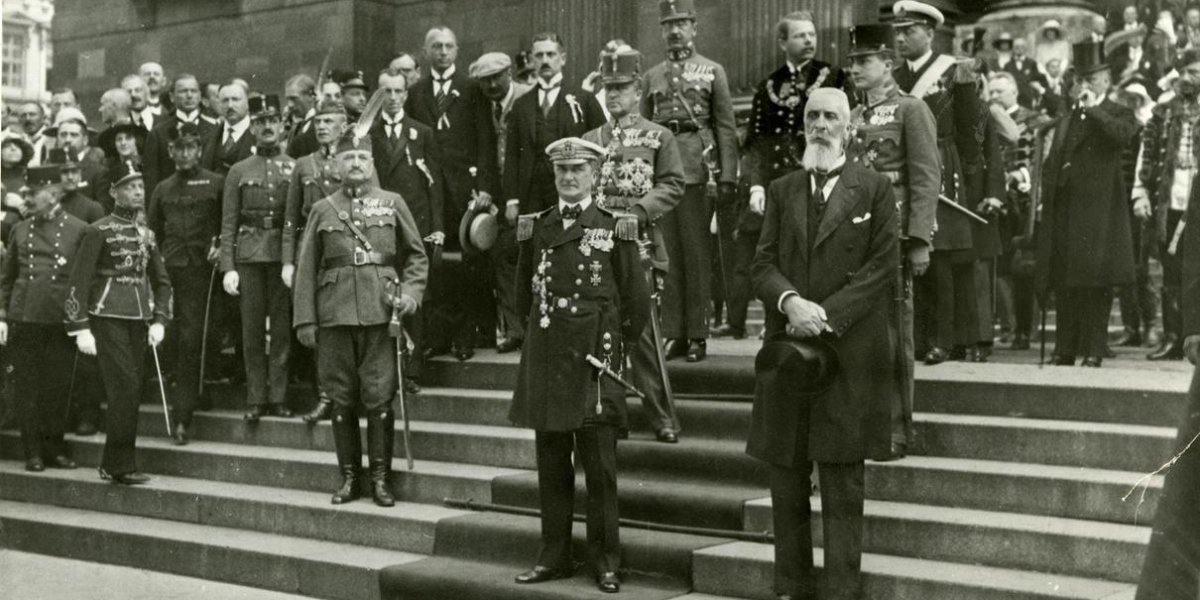

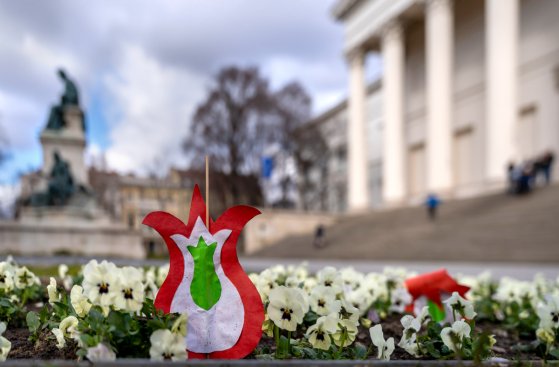

































Hozzászólások
Log in or register to comment!
Login Registration